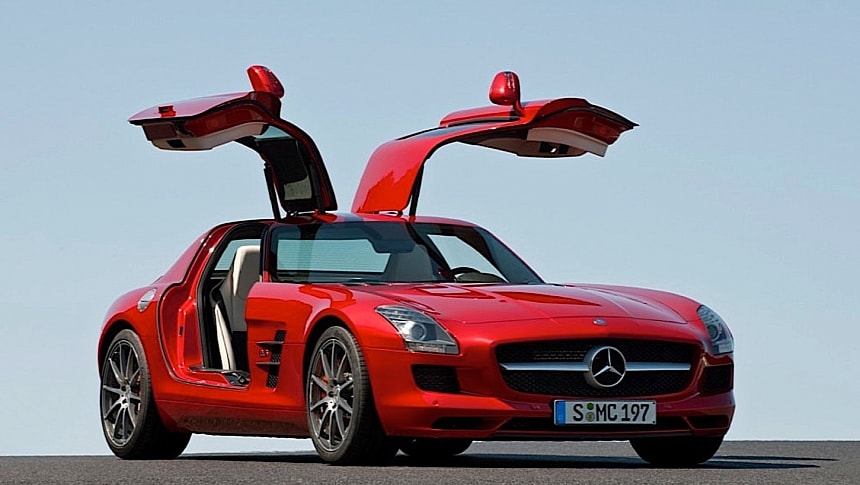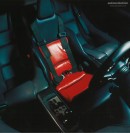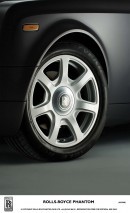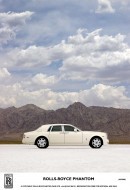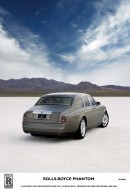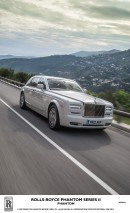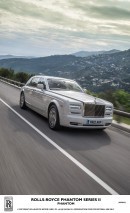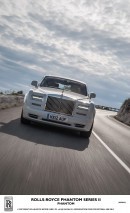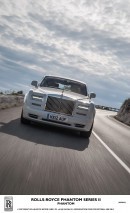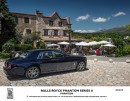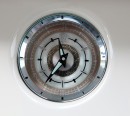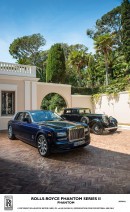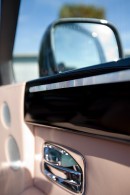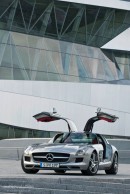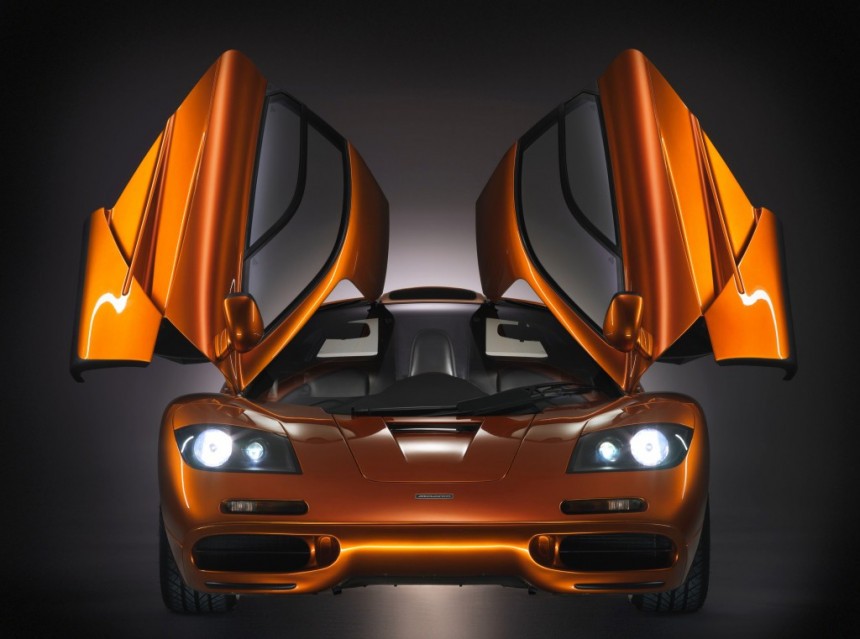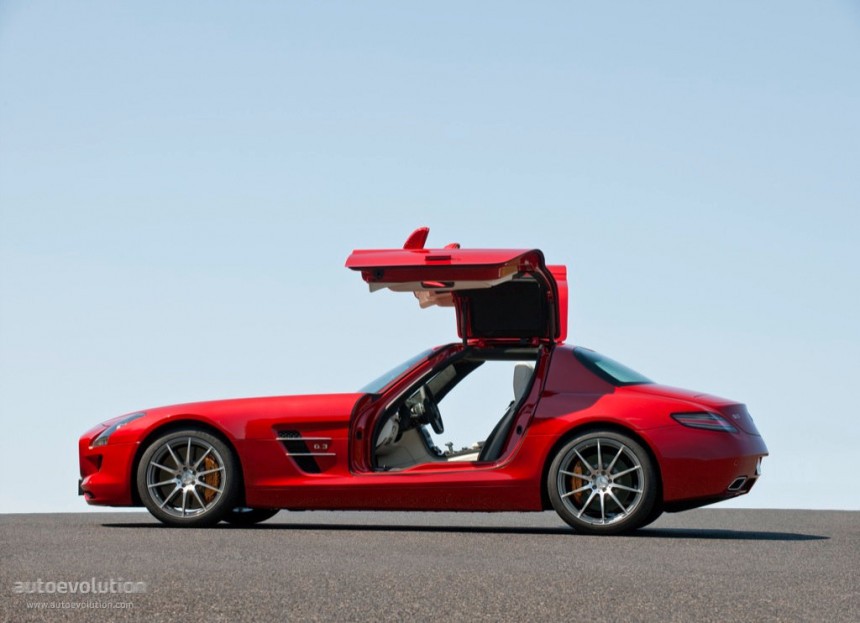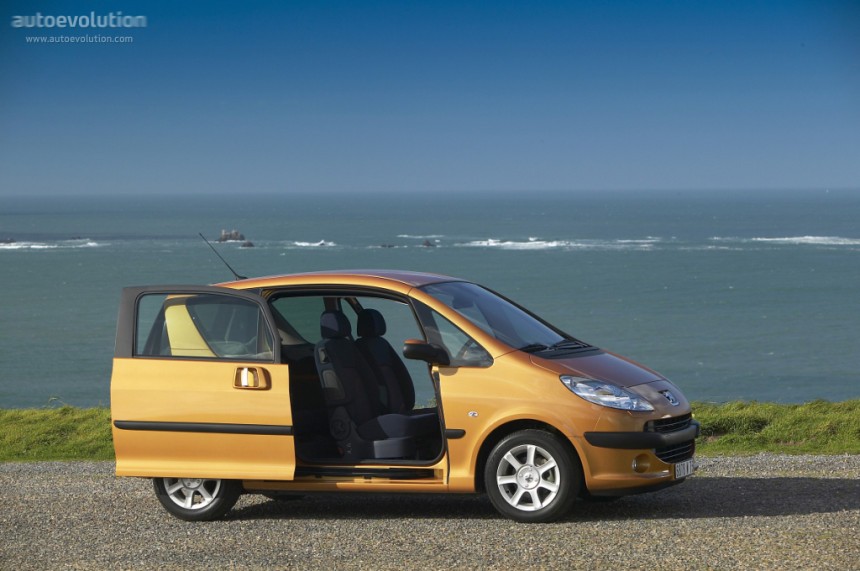Given the competitive nature of the automotive industry, it’s no surprise that today’s carmakers struggle to innovate in a bid to stay relevant. But while for them that’s just a matter of making money, for the rest of us these efforts result in all kinds of technologies that make our lives better.
In their efforts to attract more buyers carmakers focus not only on several things that make up a car, but target every single aspect of their products, be it engine, wheels, interior quality or... doors.
That’s right, doors, those elements of a vehicle we most often overlook but are crucial in defining the exterior look of a vehicle. In fact, in recent years doors have become so important that, at least in the case of some of the companies involved in making cars, they play a key role in helping businesses steal the lion’s share. Just take a look at Ford, which not long ago introduced the new B-MAX, a model that combines a conventional door system and sliding rear doors with no B-pillar for easy access.
Getting back to today’s subject, doors have evolved a lot over the past decades, and although conventional styling is still the most popular these days, there are multiple other exotic designs out there that gain a lot of attention.
Although it’s pretty difficult to group door designs in distinct categories, one can make out seven major door types (or six, if you don’t take into account the omnipresent conventional ones). In a nutshell, doors fit in one of the next categories: conventional, butterfly, suicide, gull-wing, scissor, sliding, and canopy doors.
This story won’t be about how these door types came to be, and we won’t event try to find the pros and cons of each of them. We will, however, look into how they are made so you are informed enough to decide for yourself if it’s time to switch to a new car type.
Butterfly Doors
We’ll start our journey into the car door world with the butterfly style. As the name says, they open not unlike the wings of a butterfly, and they mostly do so on supercars and other exotic car models. The choice of style is not only meant to make these cars look better, but it also contributes to its aerodynamic performance.
Very similar to the scissor doors we’ll discuss further down, the butterfly system allows the doors to move outwards and then up, and that indeed improves access in vehicles that have a much lower roofline than what we’re used to. Still, such a choice of style can also affect the interior space – then again, that’s not something this type of vehicle seems to care that much about.
There are only a handfull of car models that use butterfly doors, and they are the likes of the Enzo Ferrari, Saleen S7, Mercedes Benz SLR McLaren, and McLaren F1. Some of them use slightly modified butterfly door systems, but the overall working principle is the same.
Suicide Doors
In my book the word “suicide” is not something that can be easily used to market a product. The world at large seems to disagree, though, that’s the moniker people slapped on a type of door design that really opens up a vehicle.
In a nutshell, suicide doors make up a system that hinges from the rear end of the door, which means the front and rear doors open in opposite directions of one another.
Wondering why they’re called “suicide”? Nobody really knows for sure, but depending on who you ask it may have to do with the layout of the doors, hinting that passengers who attempt to close such a door while the car was moving were committing suicide because they had to resist the airflow.
There are a lot of cars out there that use this system, and they range from people movers for the masses to much more luxurious vehicles only the very rich can afford. On the one hand, for instance, we have the Opel Meriva, and on the other the mighty Rolls Royce Phantom. Other examples include the Spyker D12, the 1940 Peugeot 601, and the 2011 Mazda RX-8.
Gullwing doors are perhaps the most famous of unconventional car door types, and it’s impossible for us to bring the term up without talking about German carmaker Mercedes-Benz that practically invented them.
Gullwing doors were first launched on the 1952 Mercedes-Benz 300SL, a car designed for races. To make more aerodynamic, Mercedes opted to fit doors that are hinged at the roof and open upwards. They are inspired by the wings of seagulls (hence the name they wear), and comes with a series of advantages, including the fact that, in crowded places, it still allows people to get in and out.
Since Mercedes made the design famous, it has been adopted by others as well so now, aside from the Mercedes-Benz SLS AMG, it can also be seem on the likes of the Gumpert Apollo, DeLorean DMC-12, and Pagani Huayra.
Although Lamborghini has been using this design for a long time, it’s actually another Italian manufacturer that introduced scissor doors into the world. That would be Alfa Romeo, which debuted such a layout on the 1968 Carabo concept, a car based on a design by Marcello Gandini.
The way this design to work is quite simple: scissor doors use a typical hinge mounted at the front of the door, but instead of rotating outwards as it happens in the case of a conventional door, they go up, using a vertical configuration.
This approach too can be very useful when you find yourself in very tight parking spaces, but the design isn’t really something that goes on cars you usually see in the Costco parking lot. One gets this kind of doors on the likes on Lamborghinis, but also on the Spyker C8 and C12 Zagato, the Bugatti EB110, and even the Honda HSC.
Sliding doors are objects we interact with almost daily, as they are not used solely on cars but also in buildings and even on furniture. When it comes to vehicles, this approach is most used on minivans or commercial vehicles that need ample access to the cargo area.
The working principle behind these is pretty simple. Door panels are installed on a track, so all one needs to do to open or close it is slide it left or right. Because this kind of door occupies literally no later space when open, it has been used from time to time on passenger cars, in an attempt to improve passenger access and make our lives easier when parking.
Some of the most famous vehicles to use sliding doors are the Renault Kangoo, Peugeot 1007, Citroen C8, Chrysler Voyager and
Kia Sedona, although some of these carmaker adopted a more or less altered configuration of the bae design.
While it’s a nightmare to drive a car with such a door configuration if you’re wearing a tux, for instance, canopy doors are great in crowded cities where you can basically park at a single inch away from another car, without the need for room to open doors. Just jump on your car (literally), open the canopy and that’s it.
If you’re wondering who on Earth would use such a layout, well, there are several carmakers. The peeps at Volkswagen did it with the 1-liter concept . Ferrari also tried to innovate in 1970 with the Modulo concept, while Saab attempted a similar configuration 2006 with the Aero-X concept.
That’s right, doors, those elements of a vehicle we most often overlook but are crucial in defining the exterior look of a vehicle. In fact, in recent years doors have become so important that, at least in the case of some of the companies involved in making cars, they play a key role in helping businesses steal the lion’s share. Just take a look at Ford, which not long ago introduced the new B-MAX, a model that combines a conventional door system and sliding rear doors with no B-pillar for easy access.
Getting back to today’s subject, doors have evolved a lot over the past decades, and although conventional styling is still the most popular these days, there are multiple other exotic designs out there that gain a lot of attention.
Although it’s pretty difficult to group door designs in distinct categories, one can make out seven major door types (or six, if you don’t take into account the omnipresent conventional ones). In a nutshell, doors fit in one of the next categories: conventional, butterfly, suicide, gull-wing, scissor, sliding, and canopy doors.
This story won’t be about how these door types came to be, and we won’t event try to find the pros and cons of each of them. We will, however, look into how they are made so you are informed enough to decide for yourself if it’s time to switch to a new car type.
Butterfly Doors
We’ll start our journey into the car door world with the butterfly style. As the name says, they open not unlike the wings of a butterfly, and they mostly do so on supercars and other exotic car models. The choice of style is not only meant to make these cars look better, but it also contributes to its aerodynamic performance.
Very similar to the scissor doors we’ll discuss further down, the butterfly system allows the doors to move outwards and then up, and that indeed improves access in vehicles that have a much lower roofline than what we’re used to. Still, such a choice of style can also affect the interior space – then again, that’s not something this type of vehicle seems to care that much about.
There are only a handfull of car models that use butterfly doors, and they are the likes of the Enzo Ferrari, Saleen S7, Mercedes Benz SLR McLaren, and McLaren F1. Some of them use slightly modified butterfly door systems, but the overall working principle is the same.
Suicide Doors
In my book the word “suicide” is not something that can be easily used to market a product. The world at large seems to disagree, though, that’s the moniker people slapped on a type of door design that really opens up a vehicle.
In a nutshell, suicide doors make up a system that hinges from the rear end of the door, which means the front and rear doors open in opposite directions of one another.
Wondering why they’re called “suicide”? Nobody really knows for sure, but depending on who you ask it may have to do with the layout of the doors, hinting that passengers who attempt to close such a door while the car was moving were committing suicide because they had to resist the airflow.
There are a lot of cars out there that use this system, and they range from people movers for the masses to much more luxurious vehicles only the very rich can afford. On the one hand, for instance, we have the Opel Meriva, and on the other the mighty Rolls Royce Phantom. Other examples include the Spyker D12, the 1940 Peugeot 601, and the 2011 Mazda RX-8.
Gullwing Doors
Gullwing doors are perhaps the most famous of unconventional car door types, and it’s impossible for us to bring the term up without talking about German carmaker Mercedes-Benz that practically invented them.
Gullwing doors were first launched on the 1952 Mercedes-Benz 300SL, a car designed for races. To make more aerodynamic, Mercedes opted to fit doors that are hinged at the roof and open upwards. They are inspired by the wings of seagulls (hence the name they wear), and comes with a series of advantages, including the fact that, in crowded places, it still allows people to get in and out.
Since Mercedes made the design famous, it has been adopted by others as well so now, aside from the Mercedes-Benz SLS AMG, it can also be seem on the likes of the Gumpert Apollo, DeLorean DMC-12, and Pagani Huayra.
Scissor Doors
If you’re a car enthusiast, chances are that you think highly of Lamborghini. And if you feel that about Lamborghini, then you definitely know what scissor door is.Although Lamborghini has been using this design for a long time, it’s actually another Italian manufacturer that introduced scissor doors into the world. That would be Alfa Romeo, which debuted such a layout on the 1968 Carabo concept, a car based on a design by Marcello Gandini.
The way this design to work is quite simple: scissor doors use a typical hinge mounted at the front of the door, but instead of rotating outwards as it happens in the case of a conventional door, they go up, using a vertical configuration.
This approach too can be very useful when you find yourself in very tight parking spaces, but the design isn’t really something that goes on cars you usually see in the Costco parking lot. One gets this kind of doors on the likes on Lamborghinis, but also on the Spyker C8 and C12 Zagato, the Bugatti EB110, and even the Honda HSC.
Sliding Doors
Sliding doors are objects we interact with almost daily, as they are not used solely on cars but also in buildings and even on furniture. When it comes to vehicles, this approach is most used on minivans or commercial vehicles that need ample access to the cargo area.
The working principle behind these is pretty simple. Door panels are installed on a track, so all one needs to do to open or close it is slide it left or right. Because this kind of door occupies literally no later space when open, it has been used from time to time on passenger cars, in an attempt to improve passenger access and make our lives easier when parking.
Some of the most famous vehicles to use sliding doors are the Renault Kangoo, Peugeot 1007, Citroen C8, Chrysler Voyager and
Kia Sedona, although some of these carmaker adopted a more or less altered configuration of the bae design.
Canopy Doors
If you don’t know what a canopy door is, all you have to do is think about an aircraft. A canopy is a sort of door that is placed on top of the vehicle and lifts up, opening vertically.While it’s a nightmare to drive a car with such a door configuration if you’re wearing a tux, for instance, canopy doors are great in crowded cities where you can basically park at a single inch away from another car, without the need for room to open doors. Just jump on your car (literally), open the canopy and that’s it.
If you’re wondering who on Earth would use such a layout, well, there are several carmakers. The peeps at Volkswagen did it with the 1-liter concept . Ferrari also tried to innovate in 1970 with the Modulo concept, while Saab attempted a similar configuration 2006 with the Aero-X concept.
